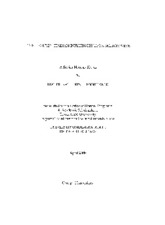| dc.description.abstract | Seventeenth-century England proved to be a dynamic atmosphere for John Milton's development as a poet. The Scientific Revolution, the rise of the middle class and the increasing conflict between country and crown culminated in extreme socio-political tension. This voluble environment led to the English Civil War and set the stage for revolutionary thought about woman's status in European society. The objective of this research project is to investigate not only misogynistic portrayals of women in art, but also positive portrayals of women and their influence on the artist John Milton and his stalwart character Eve, in Paradise Lost, during his continental tour in 1638-1639. I shall argue that Milton consciously fashioned an Eve who exercises free will with balanced qualities of strength and vulnerability in her persona. Prelapsarian Eve masterly proves her skills in poetic verse and exhibits responsibility and logic, not only as an autonomous being but also as Adam's worthy helpmate. In reading the epic poem, one can see that Milton's Eve is neither weak nor sinister, as are so many of the depictions of her in Renaissance etchings and frescos. Interestingly, a female Baroque painter, Artemisia Gentileschi, Milton's contemporary, proves an exceptional influence on the poet for she too paints a new conception of woman as independent and powerful. Like Milton, she works against the reductive painterly and literary role historically prescribed to woman and thus Eve. Establishing a relationship between these two artists, as well as other artists of the period, will prove quite significant in forwarding a body of scholarship for their contemporaries, further establishing the influence and intermingling of art and literature between iconoclastic, Protestant England, and Catholic Italy and, finally, in aiding studies of the debate over woman's role in seventeenth-century society. | en |


